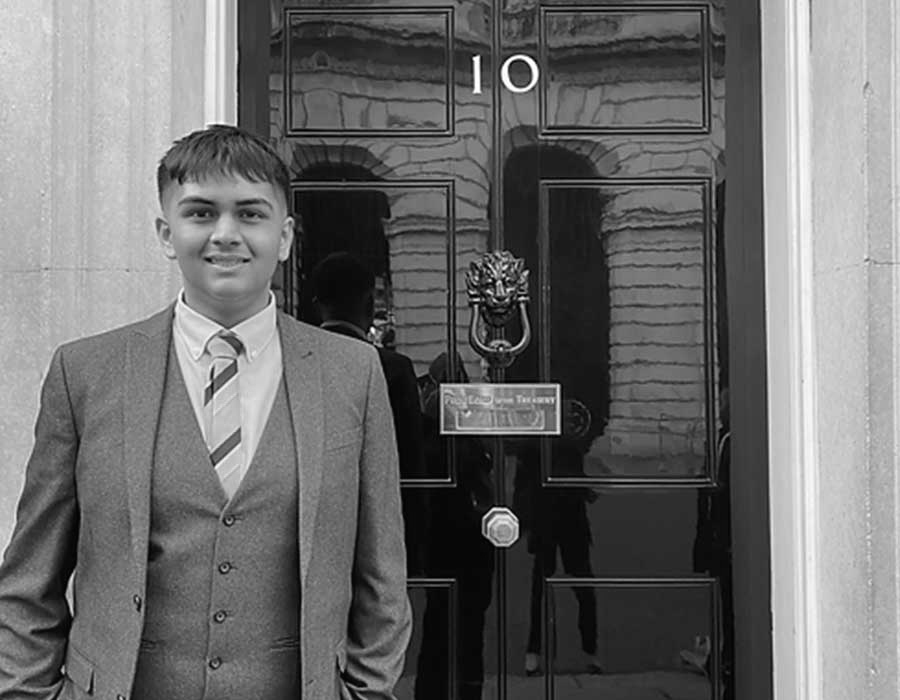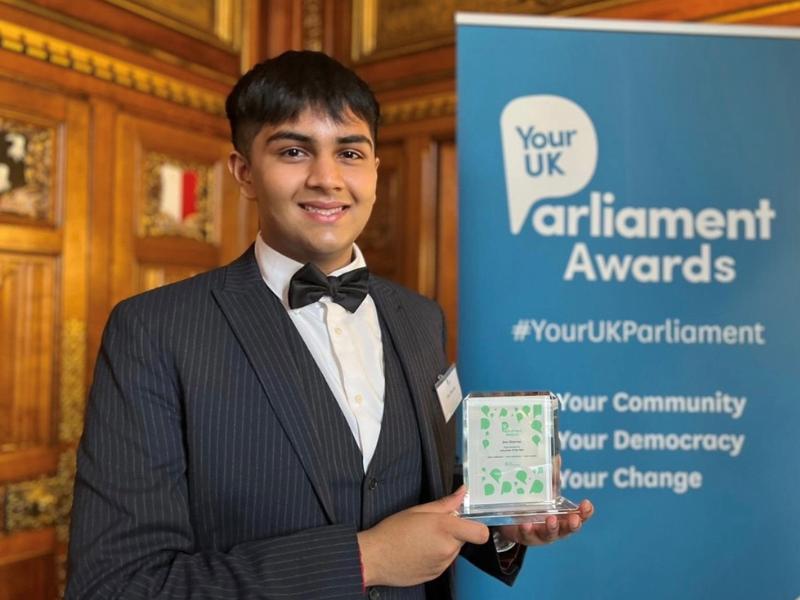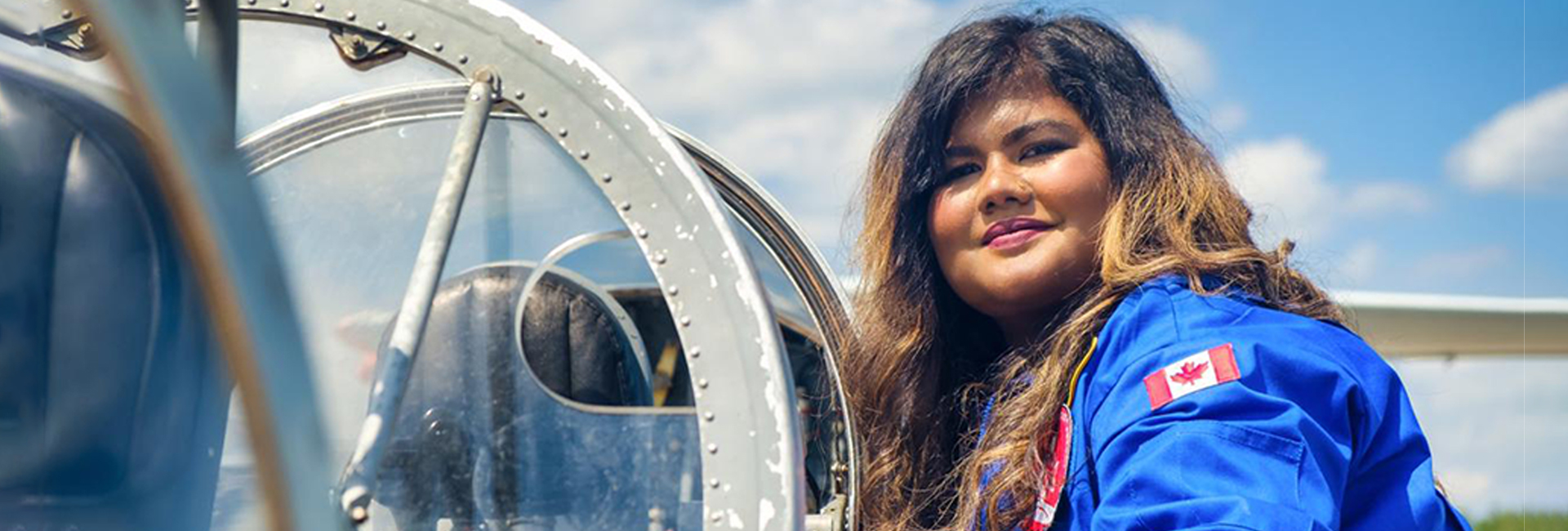(November 1, 2024) In the House of Commons, 18-year-old Dev Sharma delivered a message that’s become a rallying cry for climate and health action: “Let’s clarify, we did not cause the current climate disaster, but we are facing the health effects — even if we may not have started this catastrophe, we must be the ones to resolve it. We’ll demand answers from the producers of fossil fuels.” Dev, one of the 250 Youth Parliament members gathered to debate health and policy issues in the chamber, raised his voice against more than just climate change. In 2023, he called for better action on food poverty, making it clear that for his generation, these issues are inseparably linked.

Raised in Leicester’s Rushey Mead area, Dev’s journey into activism started early. His community’s struggles with health inequities and food poverty hit close to home, especially when Dev began noticing the of junk food advertising aimed at young people. “I feel like I’m being bombarded with junk food ads on my phone and computer, and it’s overwhelming,” he wrote for The Food Foundation. “They are everywhere, popping up when we’re watching videos, when I’m gaming with friends, and we don’t have an escape, especially not at the moment when we are living on our screens.” The flood of junk food ads pushed him to do something bigger, something that would take his voice from his community to the halls of Parliament.
By 15, Dev had won the Diana Award for his efforts in food activism, and he soon saw an opening to make a more concrete change. Recognising the influence of junk food ads, especially online, he launched a campaign targeting then-Prime Minister Boris Johnson and Health Secretary Matt Hancock, calling for an end to junk food advertising that targets children. The campaign took off, fuelled by support from the public and celebrities like Jamie Oliver. Ultimately, Dev’s online letter-gathering turned into a landmark achievement: the UK government announced a ban on online junk food advertising in June 2021. The world’s first ban of its kind, it was even included in the Queen’s Speech, marking a major win for Dev and youth advocates around the country.


Dev Sharma
As the pandemic hit and the UK went into lockdown, Dev’s advocacy didn’t slow down. With schools closed, many children who relied on free school meals faced a tougher time getting nutritious food. Partnering with footballer Marcus Rashford, Dev called on the government to extend meal support during holiday periods. His voice became one of many in a rising wave of young activists demanding that policymakers step up. More than a million people signed the petition, and in response, the government extended free school meals through the holidays — a step that helped ease the burden on countless families.
Dev’s work has helped prompt other important policy changes. For the first time in over a decade, the UK government increased the value of the ‘Healthy Start’ benefit — a scheme that provides nutritional support to young families — from £3.10 to £4.25, allowing more families to afford healthier options. Today, Dev is the chair of Bite Back 2030, a youth-led organisation advocating for systemic changes in the food industry. “After research found that 15 billion ads were being seen by children and young people, there was a consultation launched by the Government to ban junk food,” Dev shared in an interview. “The Government asked for the public’s opinion on the matter. But I felt like the voices of young people weren’t really being heard. So, I wanted to do something about it.”
Dev’s impact now reaches beyond his local community and resonates with the larger British-Indian diaspora. For Dev, being a British Indian is about carrying forward a legacy of resilience and community support, values he channels into his advocacy work. The British Indian community has long been a part of the social justice fabric of the UK, and Dev’s activism highlights how new generations are building on that legacy, particularly in issues that affect minorities and underrepresented groups. By tackling food poverty and demanding clean air for his generation, he’s brought these urgent issues to the forefront of government policy discussions.


International platforms, too, have noticed his work. Dev has spoken at high-profile events like the UN Food Systems Summit and the Global Obesity Summit in New York. Closer to home, he recently led the UK Government’s first youth inquiry into the cost of living, an examination of how rising costs are impacting young people across the country. “The health of one in three children is already at risk from the food they eat,” Dev noted, as he argued for lasting changes that prioritize child health.
The personal moments also drive his mission. Studying for his GCSE exams in 2021, Dev found himself bombarded by fast food ads on YouTube. That was when he realised he wasn’t alone — millions of young people were seeing the same ads, feeling the same pressure to choose unhealthy options. That moment led him to work with Bite Back 2030 to launch a campaign that didn’t just raise awareness but fought for tangible change. “Each time a member of the public signed the letter, an automatic email would be sent directly to the Health Secretary,” he explained, adding that the campaign’s success brought the issue to the attention of MPs, who eventually agreed to ban the ads.


Dev Sharma won the UK Parliament Award
Even in his achievements, Dev remains focused on what’s next. He was recently asked to switch on Leicester’s Diwali Lights, the largest Diwali celebration outside of India, symbolizing his role as a leader not just for British Indian youth, but for all young people who want to make an impact. He’s spoken at international gatherings, worked with government officials, and continues to drive campaigns that change lives.
Dev Sharma is a young leader pushing the limits of what youth activism can achieve. His work is proof that young voices are key to tackling today’s toughest challenges. With the determination to take on everything from junk food advertising to climate action, Dev represents a new wave of British Indian activism that’s reshaping policy and inspiring a generation ready to make a difference.





